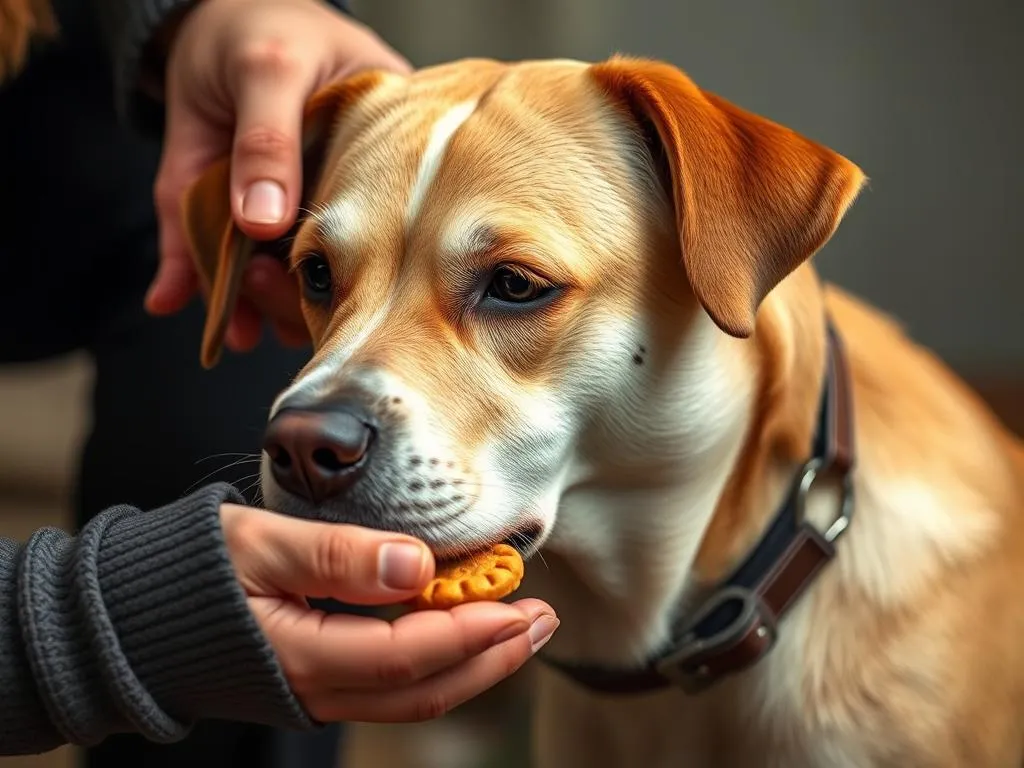
Introduction
Treats play a crucial role in dog training, serving as a powerful tool for reinforcing positive behavior and encouraging your furry friend to learn new commands. When used correctly, how to give a dog a treat can transform the training process, making it enjoyable for both you and your dog. This article aims to provide a comprehensive guide on effectively giving treats to dogs, ensuring that you maximize their training potential while fostering a strong bond with your pet.
Understanding Dog Behavior
The Role of Treats in Training
Positive reinforcement is a cornerstone of effective dog training. By rewarding your dog with treats, you’re not just providing them with a tasty snack; you’re also motivating them to repeat desired behaviors. Dogs are naturally inclined to seek rewards, and treats can significantly enhance their learning experience. When your dog associates a specific behavior with a treat, they are more likely to perform that behavior in the future.
Timing and Context
The timing of treat delivery is critical for maximum effectiveness. To reinforce a command or behavior, you should give a treat immediately after your dog performs the desired action. This immediate reinforcement helps your dog make the connection between the behavior and the reward. Additionally, the context of the training session matters. Choose a distraction-free environment to ensure your dog can focus on learning.
Choosing the Right Treats
Types of Treats
When it comes to selecting treats, you have various options. Commercial treats are readily available and often come in convenient packaging. However, homemade treats can be healthier and tailored specifically to your dog’s preferences.
- Commercial Treats: Convenient but check for quality.
- Homemade Treats: Healthier options made from natural ingredients.
Soft treats are often easier for dogs to chew and can be more appealing during training. On the other hand, hard treats may take longer to consume, which can be useful for longer training sessions but might not be as effective for quick reinforcement.
Nutritional Considerations
It’s essential to choose healthy treats for your dog. Look for ingredients that are natural and free from artificial additives. Some suggested ingredients to include are:
- Lean meats: Chicken or turkey
- Vegetables: Carrots or peas
- Fruits: Blueberries or apples (without seeds)
Avoid treats high in sugar or fillers, as these can lead to health problems.
Size and Texture
The size and texture of treats can significantly impact their effectiveness. Small, bite-sized treats are often the best option for training, as they can be consumed quickly without interrupting the flow of the session. Larger treats may be better suited for special occasions or as rewards for completing a challenging task.
Consider your dog’s breed and preferences when selecting textures. Some dogs may prefer chewy treats, while others might enjoy crunchy options.
Techniques for Giving Treats
The Basic Method
To properly give a treat during training, follow these steps:
- Get your dog’s attention: Make sure your dog is focused on you.
- Issue the command: Clearly state the command you want your dog to follow.
- Reward immediately: As soon as your dog performs the desired action, offer the treat.
- Use proper hand positioning: Hold the treat in your hand at nose level to entice your dog.
Your body language plays a crucial role in the training process. Ensure your posture is open and inviting to encourage your dog to engage with you.
Advanced Techniques
Once you have mastered the basic method, consider incorporating treats into more advanced training techniques, such as clicker training. This method uses a click sound to mark the desired behavior, followed by a treat. This creates a clear association between the action and the reward.
Additionally, you can incorporate treats into playtime. Use a treat as a reward for good behavior during play sessions. This not only reinforces training but also adds an element of fun to the process.
Treat Dispensing Toys
Treat-dispensing toys can add an exciting twist to your dog’s training routine. These toys release treats as your dog plays with them, encouraging engagement and mental stimulation.
Benefits of using treat-dispensing toys include:
- Mental stimulation: Challenges your dog to think and problem-solve.
- Extended playtime: Keeps your dog engaged for longer periods.
- Controlled treat intake: Helps manage portion sizes.
Popular brands you might consider include KONG and Outward Hound.
Common Mistakes to Avoid
Overusing Treats
While treats are essential in dog training, overusing them can lead to health issues such as obesity and dental problems. Striking a balance is crucial. Consider using verbal praise and affection alongside treats to reinforce good behavior without relying solely on food rewards.
Giving Treats at the Wrong Time
Understanding the importance of timing in relation to commands is essential. If you give a treat too late, your dog may not associate the reward with the desired behavior. Always aim for immediate reinforcement to create a strong connection between action and reward.
Ignoring Dog Preferences
Each dog has unique preferences when it comes to treats. Some dogs may be picky eaters, while others will devour anything. Take the time to observe your dog’s reactions to different treats and adjust your choices accordingly. Recognizing your dog’s favorite treats can enhance their motivation and engagement during training.
Creating a Training Schedule
Frequency of Treats
The frequency of treat giving during training sessions should be strategic. Start with frequent treats when teaching new commands, gradually reducing the frequency as your dog becomes more proficient. This helps solidify their learning while also preventing over-reliance on treats.
Setting Goals
Having clear training goals is essential for effective dog training. Define what you want to achieve with your dog, whether it’s mastering basic commands or addressing specific behavioral issues. Adjust your treat-giving strategy based on your training progress, ensuring that you remain adaptive to your dog’s learning needs.
Alternatives to Treats
Verbal Praise and Affection
While treats are a powerful motivator, verbal praise and affection can be equally effective. Recognize when to use praise instead of treats. For example, during routine commands or when your dog consistently demonstrates good behavior, verbal reinforcement can be sufficient.
Playtime as a Reward
Using playtime as a reward can be a fantastic alternative to treats. Incorporate fetch or tug-of-war into your training sessions, rewarding your dog with playtime for following commands. Combining treats and play can create a well-rounded training experience that keeps your dog engaged and motivated.
Conclusion
In summary, understanding how to give a dog a treat is an integral part of effective dog training. By using treats wisely, selecting the right types, timing their delivery appropriately, and avoiding common mistakes, you can enhance your dog’s learning experience and strengthen your bond. Remember that patience and consistency are key in training, so take your time to experiment with different methods and treat types as you progress on this rewarding journey with your furry companion.









